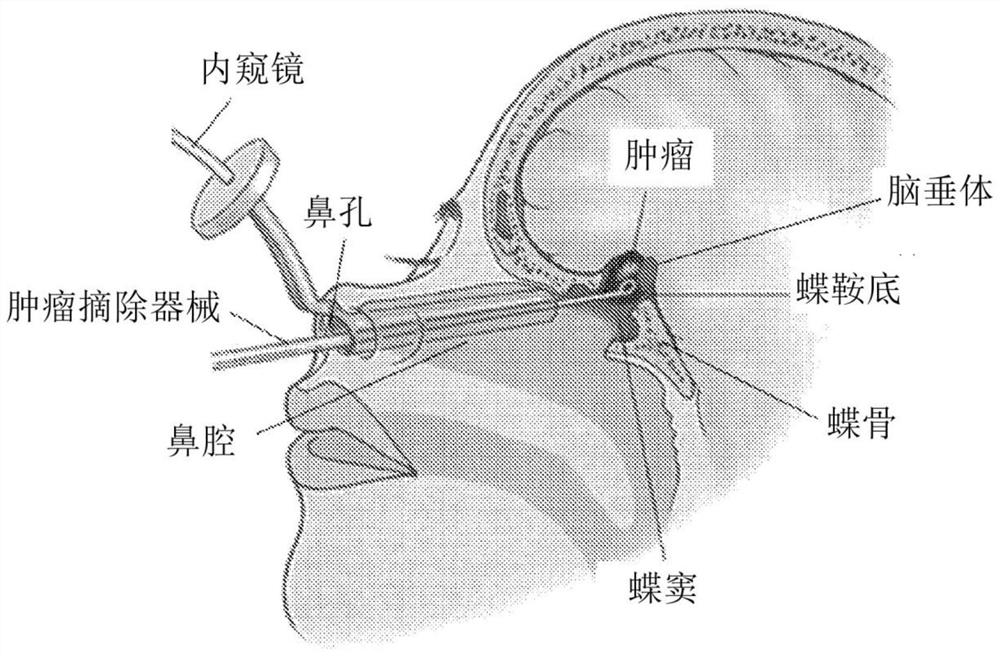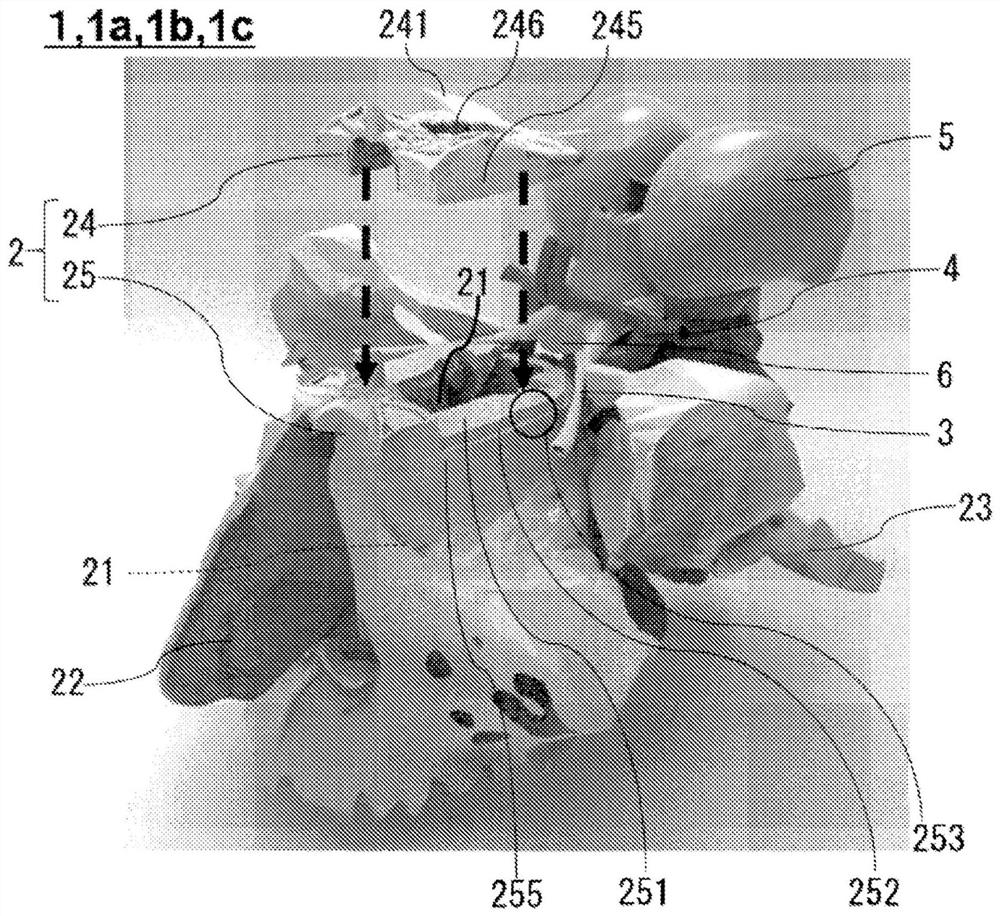Evaluation model for endoscopic transnasal surgery, simulated dura mater unit, and evaluation method for operative procedure
A technology for evaluating models and evaluation methods, which can be applied to surgery, teaching models, educational tools, etc., and can solve problems such as damage to life or impact on daily life
- Summary
- Abstract
- Description
- Claims
- Application Information
AI Technical Summary
Problems solved by technology
Method used
Image
Examples
no. 1 approach
[0093] refer to figure 2 , the evaluation model 1a in the first embodiment will be described. figure 2 It is a figure which shows the outline|summary of evaluation model 1a. The evaluation model 1a in the first embodiment includes a dummy head and a strain sensor (not shown). The simulated head only needs to include at least the simulated skull part 2, and may include simulated brain organs as necessary. It should be noted that, in this specification, "organs in the brain" refers to the organs included in the head of the human body other than the skull, and when it is described as "organs in the simulated brain", it refers to organs that are equivalent to the brain. The simulated brain internal organs of internal organs include only a part or all of them. exist figure 2 In FIG. 2 , an example including a simulated optic nerve 3 , a simulated internal carotid artery 4 , and a simulated brainstem 5 is shown as the simulated brain organ. Although in figure 2 It is not i...
no. 4 approach
[0132] refer to Figure 4 , the evaluation model 1d in the fourth embodiment will be described. The evaluation model 1d in the fourth embodiment differs from the third embodiment in that the simulated dura mater 7 is attached to the first surface 241 of the first simulated skull part 24, and is the same as the third embodiment in other respects. Therefore, in the fourth embodiment, descriptions will be made centering on points different from those in the third embodiment, and overlapping descriptions of matters already described in the third embodiment will be omitted. Therefore, even if it is not explicitly described in the fourth embodiment, it is needless to say that the matters described in the first to third embodiments can also be adopted in the fourth embodiment.
[0133] When performing endoscopic transnasal surgery in humans, it is necessary to incise the dura mater 7 before reaching the tumor 6 . Then, after the tumor 6 is removed, the dura mater 7 needs to be sutu...
Embodiment 1
[0146] [Preparation of evaluation device 1]
[0147] Using a 3D printer (manufactured by 3D Systems, ProJet 5500XE), the simulated skull 2 , simulated optic nerve 3 , simulated internal carotid artery 4 , and simulated brainstem 5 were integrally molded. VisiJet CR-WT (manufactured by 3D Systems, ABS-based resin material) and VisiJet CE-NT (manufactured by 3D Systems, rubber-based resin material) are used as modeling materials to simulate the combination of ABS-based resin materials in two parts of the skull to simulate the optic nerve 3. The simulated internal carotid artery 4 and the simulated brainstem 5 are compounded with more rubber-like resin materials, so that they are made with flexibility. Next, a linear piezoelectric element (coaxial piezoelectric sensor 21110 manufactured by Mitsui Chemicals, Inc.) was used as a strain sensor, and the strain sensor was inserted into the hollow portion of the prepared hollow simulated optic nerve 3 . In addition, when inserting t...
PUM
 Login to view more
Login to view more Abstract
Description
Claims
Application Information
 Login to view more
Login to view more - R&D Engineer
- R&D Manager
- IP Professional
- Industry Leading Data Capabilities
- Powerful AI technology
- Patent DNA Extraction
Browse by: Latest US Patents, China's latest patents, Technical Efficacy Thesaurus, Application Domain, Technology Topic.
© 2024 PatSnap. All rights reserved.Legal|Privacy policy|Modern Slavery Act Transparency Statement|Sitemap



